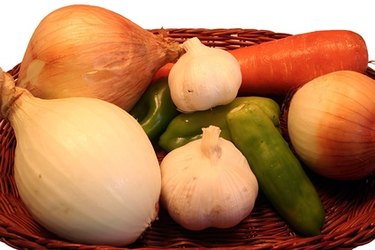
Growing your own vegetables in a backyard or community garden is a great way to save money, reduce your carbon footprint and ensure that you have fresh and nutritious ingredients readily at hand. Once you've picked a suitable location, choosing what seed varieties to plant is the next important step. Certain vegetables are best suited to certain climates. In Minnesota, for example, the types of vegetables able to grow will differ from those that might flourish in a more southern region.
Leafy Vegetables
Video of the Day
According to the University of Minnesota, many types of leafy vegetables are well-suited to the Minnesota climate. Cabbage is one such plant, including many of its varieties: red cabbage, green cabbage, savoy cabbage and Chinese cabbage. Radicchio, chard, globe and cylindra beets are also good types, as well as lettuce varieties such as head or leaf lettuce and romaine. It is usually best to plant leafy vegetables early, around March, by starting seed growth indoors and later transporting the plant outside.
Video of the Day
Beans
Try planting several types of beans in your Minnesota garden. Pole beans, green beans, lima beans and yellow or purple beans are several examples. Beans should be planted outside, between mid-May and June.
Nightshades
Nightshades are a diverse group of foods, herbs, shrubs and trees that often do well in a more northern climate. Some suggestions for Minnesota include tomatoes, both regular potatoes and sweet potatoes, eggplant and different species of sweet and hot peppers.
Other Root Vegetables
Many root vegetables, like potatoes, belong to the nightshade category and can be grown in even the most northern parts of Minnesota. Other root vegetables, such as onions, garlic, turnips and carrots, should be considered as they will also fare well. As the University of Minnesota notes, however, the cooler the climate, the longer it takes for maturity; therefore, most crops grown in northern Minnesota will take longer to mature. Plant onion, turnips and garlic in April, but save the garlic for October.